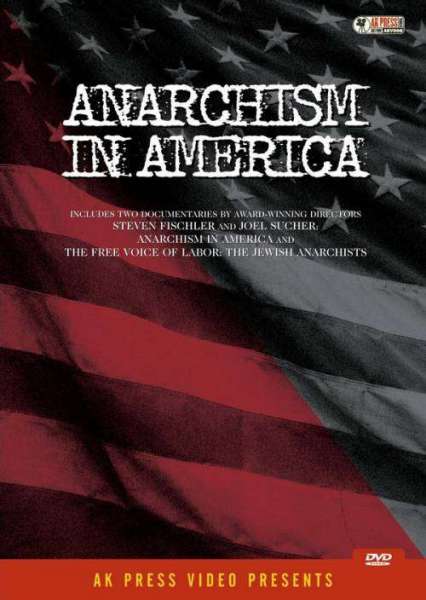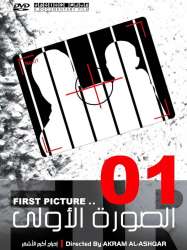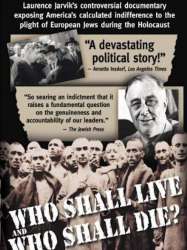Free Voice of Labor: The Jewish Anarchists is a film of genre Documentary released in USA on 1 january 1980
Free Voice of Labor: The Jewish Anarchists (1980)

If you like this film, let us know!
- Infos
- Casting
- Technical infos
- Photos
- Videos
- Film quotes
- Characters
- Music
- Awards
Released in USA 1 january 1980
Length 1h
Genres Documentary
Themes Films about religion, Documentary films about historical events, Documentary films about politics, Documentary films about religion, Documentary films about anarchism, Political films, Films about Jews and Judaism
Rating74%










The Free Voice of Labor: The Jewish Anarchists is a 1980 documentary by Steve Fischler and Joel Sucher of Pacific Street Films. It memorializes the story of the Yiddish anarchist newspaper Fraye Arbeter Shtime, and the Jewish anarchist movement of the early 20th century. The movie contained a short interview with a very young Joe Conason. Paul Avrich was a consultant on the film. As of 2006, AK Press has begun distributing it as part of a double DVD release with Anarchism in America, named after the latter.
Comments
Leave comment :
Suggestions of similar film to Free Voice of Labor: The Jewish Anarchists
There are 8975 with the same cinematographic genres, 10501 films with the same themes (including 0 films with the same 7 themes than Free Voice of Labor: The Jewish Anarchists), to have finally 70 suggestions of similar films.If you liked Free Voice of Labor: The Jewish Anarchists, you will probably like those similar films :

The Sons of Eilaboun (2007)
, 24minutesDirected by Hisham Zreiq
Origin Israel
Genres Documentary
Themes Films set in Africa, Films about religion, Documentary films about law, Documentary films about war, Documentary films about historical events, Documentaire sur une personnalité, Documentary films about politics, Documentary films about religion, Political films, Films about Jews and Judaism
Rating68%





The film starts with Melia Zreiq, an old woman from Eilaboun, saying: "I hope God will bring peace to this land, and let the peoples live together - a good life. I hope there will be peace". Historian Ilan Pappe talks about Plan Dalet, a plan that David Ben-Gurion and the Haganah leaders in Palestine worked out during autumn 1947 to spring 1948. Pappe discusses the details of the plan, and how was it carried out. On October 30, 1948, the Israeli army entered Eilaboun at approximately 5 AM. They then forced the villagers together in the main square of the village. They chose seventeen young men. Five of them were taken as human shield, and the rest of the twelve were killed, each in a different location. This all happened after the expulsion of the rest of the village to Lebanon, where they became refugees after a five days forced march to Lebanon. After a United Nations peace keeper observed and reported Israel was forced to allow the people back.

All Hell Broke Loose (1995)
, 45minutesOrigin Israel
Genres Documentary
Themes Films set in Africa, Films about religion, Films about terrorism, Documentary films about law, Documentary films about war, Documentary films about historical events, Documentaire sur une personnalité, Documentary films about politics, Documentary films about religion, Documentary films about terrorism, Political films, Films about Jews and Judaism

The Colour of Olives (2006)
, 1h37Directed by Carolina Rivas
Origin Israel
Genres Documentary
Themes Films set in Africa, Films about families, Films about religion, Documentary films about law, Documentary films about war, Documentary films about historical events, Documentaire sur une personnalité, Documentary films about politics, Documentary films about religion, Political films, Films about Jews and Judaism
Rating70%






First Picture (2007)
, 27minutesGenres Documentary
Themes Films set in Africa, Films about religion, Documentary films about law, Documentary films about war, Documentary films about historical events, Documentaire sur une personnalité, Documentary films about politics, Documentary films about religion, Political films, Films about Jews and Judaism
Rating75%





 , 1h30
, 1h30Origin USA
Genres Documentary
Themes Films about racism, Films about religion, Documentary films about racism, Documentary films about law, Documentary films about war, Documentary films about historical events, Documentaire sur une personnalité, Documentary films about politics, Documentary films about religion, Political films, Films about Jews and Judaism, Documentary films about World War II
Rating74%






Iron Wall (2007)
, 52minutesGenres Documentary
Themes Films set in Africa, Films about religion, Documentary films about law, Documentary films about war, Documentary films about historical events, Documentary films about politics, Documentary films about religion, Political films, Films about Jews and Judaism

500 Dunam on the Moon (2002)
Origin USA
Genres Documentary
Themes Films set in Africa, Films about religion, Documentary films about law, Documentary films about war, Documentary films about historical events, Documentaire sur une personnalité, Documentary films about politics, Documentary films about religion, Political films, Films about Jews and Judaism

The Making of a Martyr (2006)
Origin Canada
Genres Documentary
Themes Films set in Africa, Films about religion, Films about terrorism, Documentary films about law, Documentary films about war, Documentary films about historical events, Documentaire sur une personnalité, Documentary films about politics, Documentary films about religion, Documentary films about terrorism, Political films, Films about Jews and Judaism, Films about Islam
Rating69%





 , 1h
, 1hOrigin United-kingdom
Genres Documentary
Themes Films set in Africa, Films about religion, Documentary films about law, Documentary films about war, Documentary films about historical events, Documentaire sur une personnalité, Documentary films about politics, Documentary films about religion, Political films, Films about Jews and Judaism
Actors Louis Theroux
Rating72%






...More Than 1000 Words (2006)
, 1h18Origin Israel
Genres Documentary
Themes Films set in Africa, Films about religion, Documentary films about the visual arts, Documentary films about law, Documentary films about war, Documentary films about historical events, Documentaire sur une personnalité, Documentary films about politics, Documentary films about religion, Political films, Films about Jews and Judaism
Actors Galit Gutmann
Rating74%





 Connection
Connection